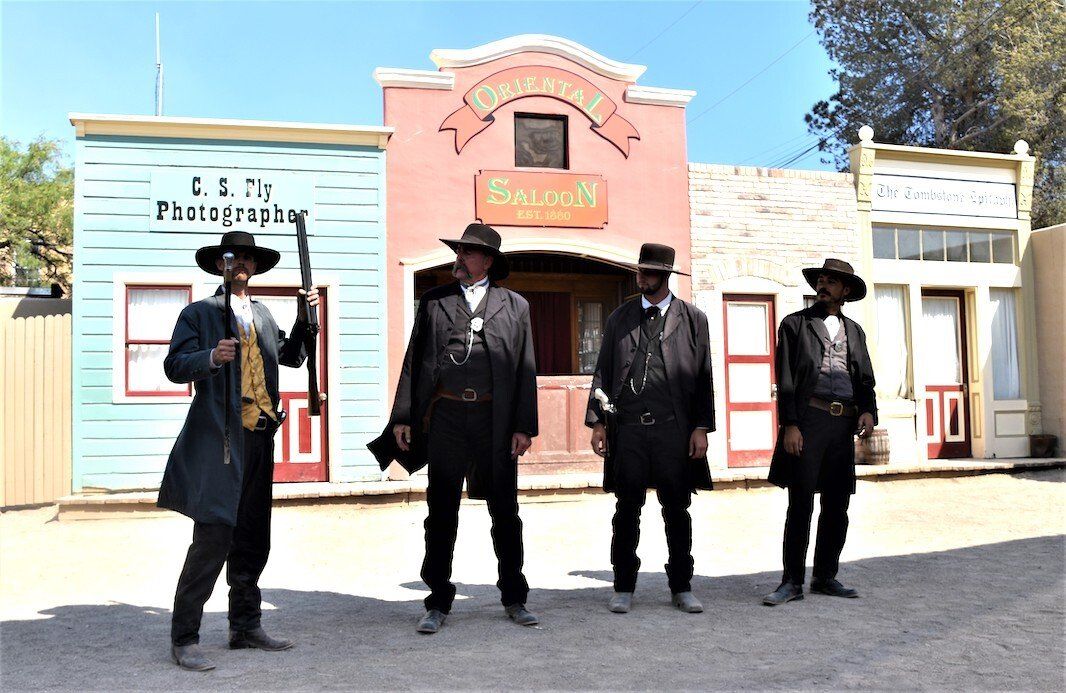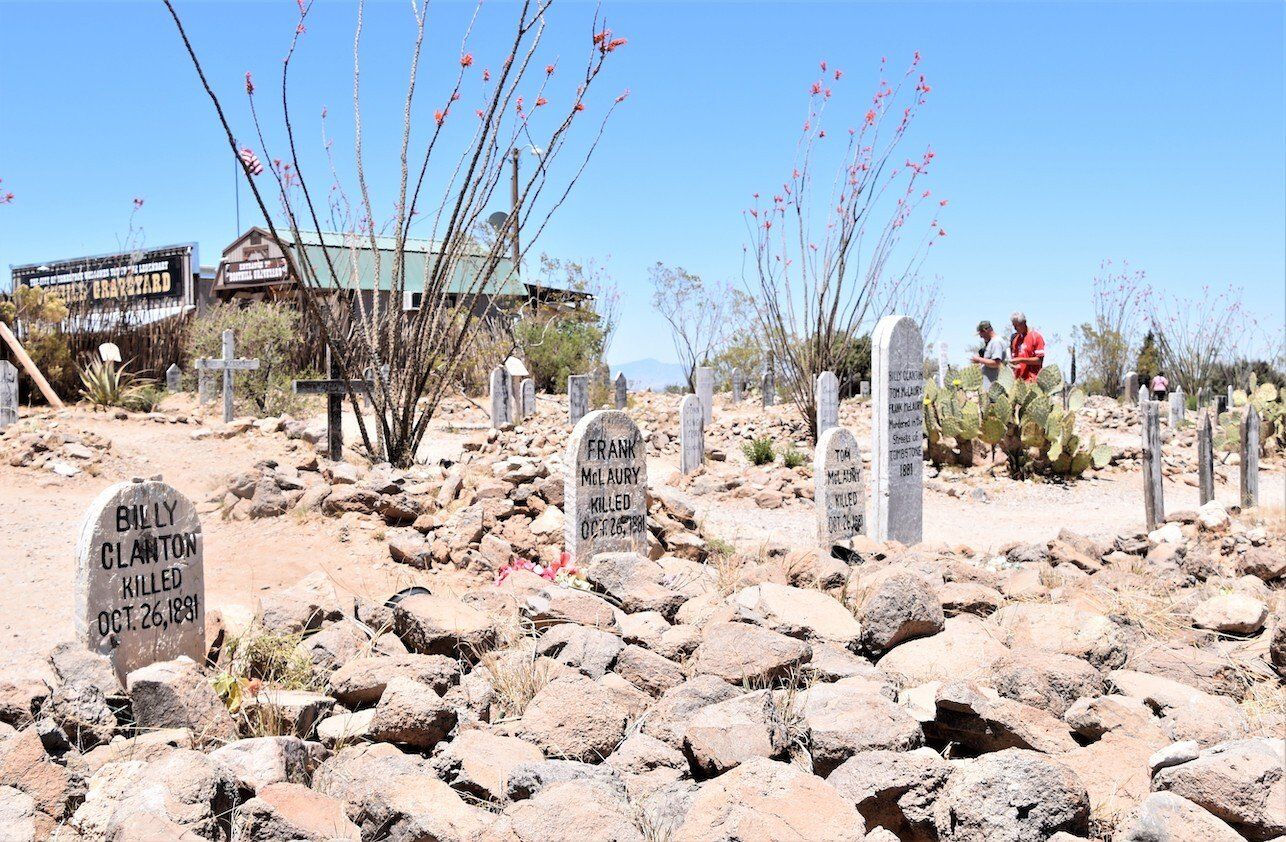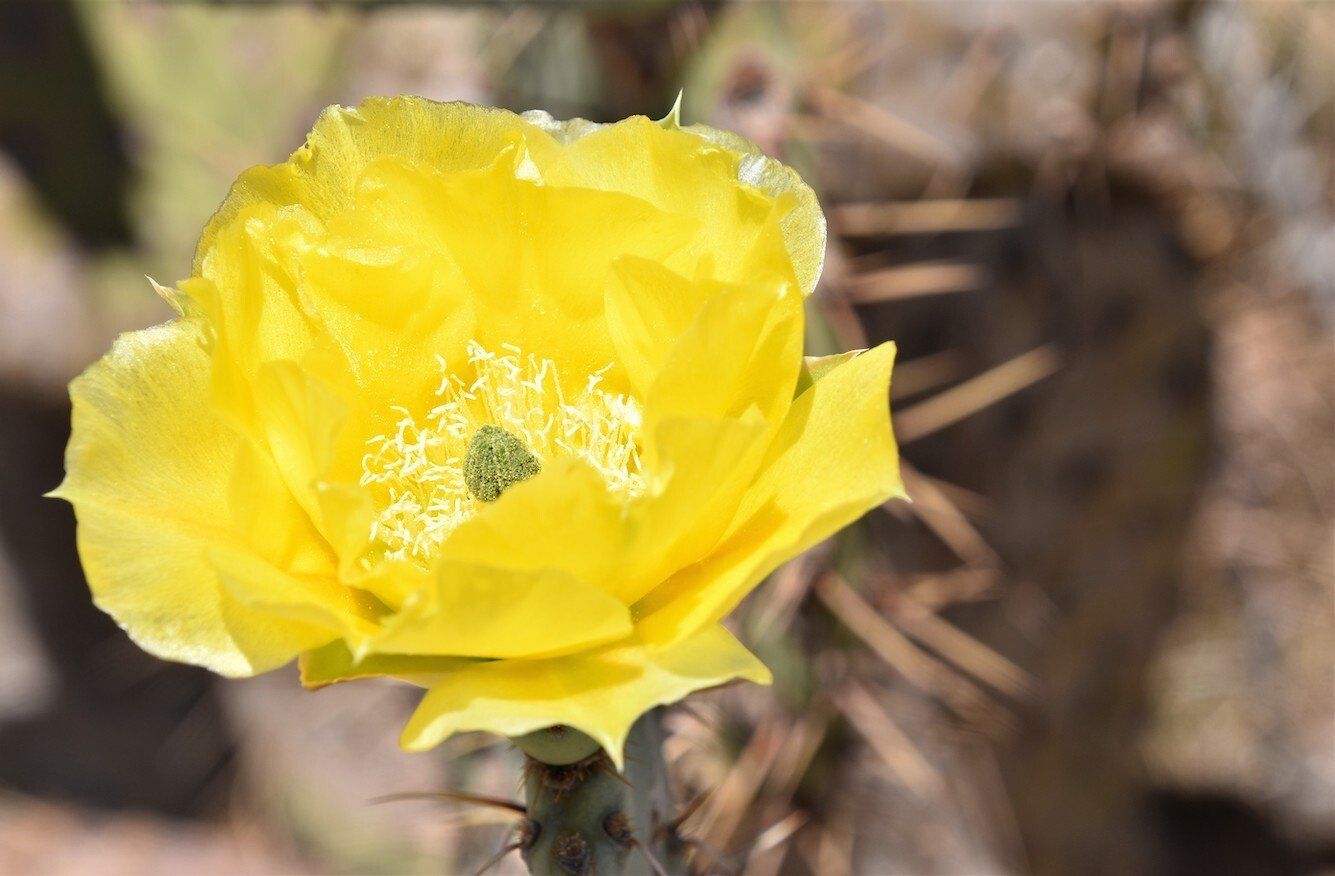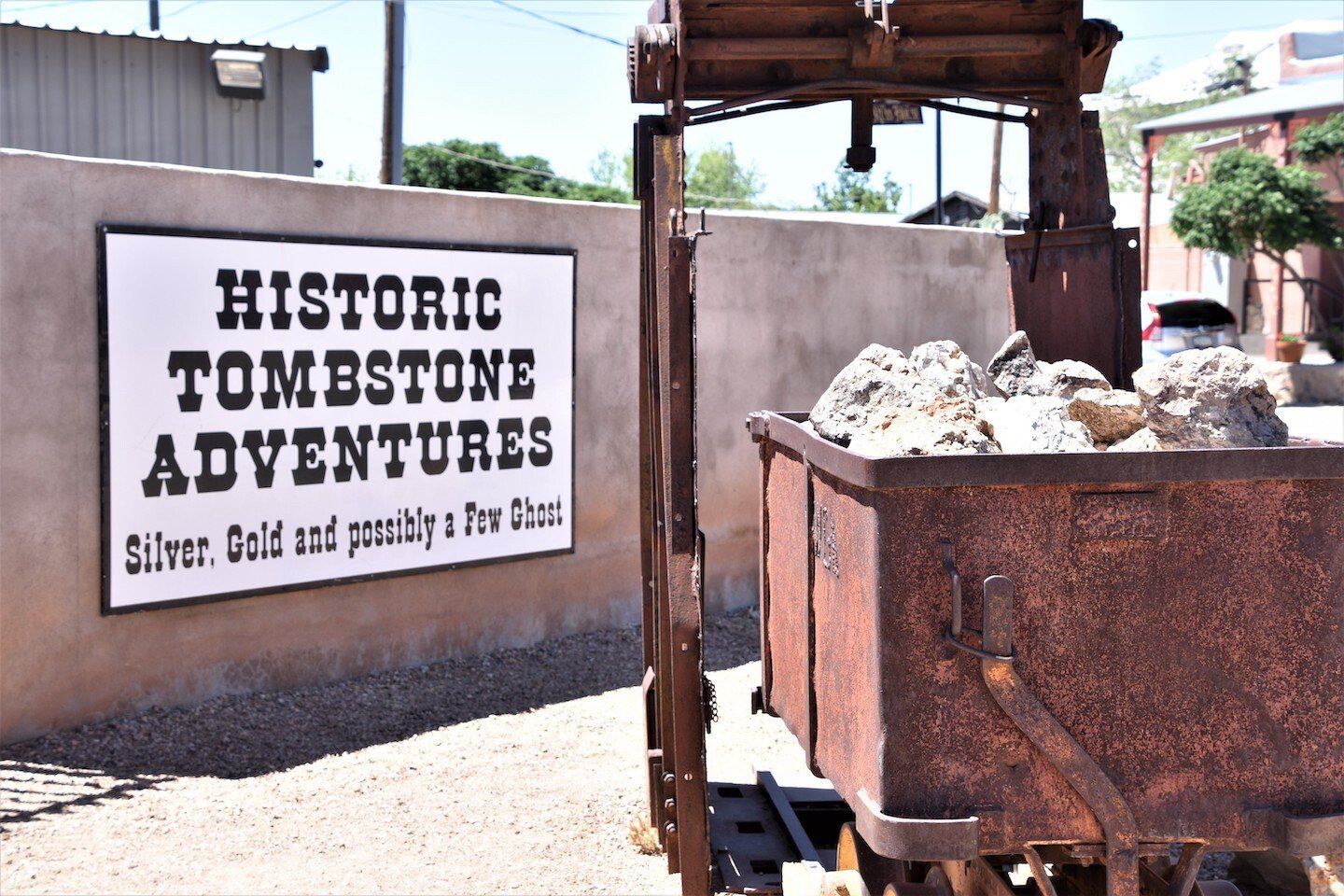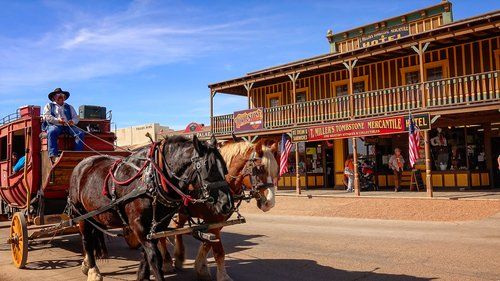
Tombstone, Arizona - "The town too tough to die."
By Marilyn Jones
Milliner Bonnie Darlington sells lavish hats to the ladies of Tombstone as a cottage business. Her hats are trendy since nearly everyone in town dresses as if it's 1880, especially during special events. They take their history very seriously here in the Wild West of southern Arizona.
Visitors will find re-enactors, saloons, and stagecoaches in the historic district. Whisked away to when folks worked in the silver mines and famous men like Wyatt Earp and Doc Holiday frequented the local establishments.
Ed Schieffelin's discovery of silver made this community a legendary place. Schieffelin wanted to explore the region near the former Chiricahua Reservation. Naysayers said the only thing he'd find in the hills was his Tombstone.
After finding what he expected to be a mother lode, he sought an expert who said the silver assayed out to $2,000.00 per ton. As the mining operation grew, so did the need for men. Soon a tent community sprang up. When word got out about the silver in the area, this village grew into a metropolis almost overnight. In late 1879, their two best mines projected dividends of $50,000.00 per month for the next two years.
A must-see is a famous Gunfight at OK Corral re-enactment.
As communities developed around the Tombstone mines and stamp mills, where the ore was crushed and the silver distracted before being made into bars, the "cowboys" settled on nearby ranches. They provided beef at less than market rates with cattle stolen from Mexico. After months of lawlessness around town and in Sonora, Mexico, the friction between Wyatt Earp, his brothers Virgil and Morgan, their friend "Doc" Holliday, and the "cowboys" all came to a head. On October 26, 1881, the most famous gunfight in the American West took place between the two factions.
Local historians say that although the town is famous for the OK Corral, it was never the wild place it has been made out to be. On the contrary, it was very modern, sophisticated, and extremely wealthy. Telephones were installed in Tombstone in 1882. By 1883, the city had two gas companies, three water companies, two ice companies, and five ice cream parlors. Fresh seafood was delivered daily from Baja, Mexico. The mining camp became a metropolis that rivaled San Francisco.
In February 1881, Tombstone was designated as the County Seat for the newly created Cochise County. Using 50,000 bricks, the Cochise County Courthouse was built. Today, the Tombstone Courthouse State Historic Park serves as a museum with displays about the silver mines and the people of Tombstone.
Boothill Cemetery, about a mile from the main historical area, was Tombstone's third graveyard. It was full by 1884, and the current City Cemetery was created. It is estimated that between 250 and 440 people are buried at Boothill. Outlaws and respected citizens share this hallowed ground, and it is open to visitors daily. Among the graves are three of the "cowboys" killed at OK Corral: Billy Clanton, Frank McLaury, and Tom McLaury.
In addition to the OK Corral re-enactment, the courthouse, and Boothill, you may want to visit Goodenough Silver Mine.
After putting on a hard hat, guides explain silver mining before taking small groups into the mine, where guests can still see streaks of silver in the cave-like walls. The process had to be carried out by candlelight. To conserve the allotted candles' lives, men often worked together - one man holding a chisel and the other man hammering the chisel into the hard rock.
Although several hundred silver mines in and around Tombstone were being worked, few were successful. However, Goodenough was very prosperous.
Another must-see is The Bird Cage Theatre. Opening in 1881, the "New York Times" reported. "The Bird Cage Theatre is the wildest, wickedest night spot between Bason Street and the Barbary Coast."
For eight years, the theater operated 24 hours a day. It is rumoured that 26 people were killed in the Bird Cage. More than 140 bullet holes remain in the building.
The owners simply shut the doors and left everything in the theatre when it closed, creating a time capsule and an excellent first-hand look at the city's past.
So what happened to Tombstone's silver mining operation?
At first, mining was done toward the surface, but as the mines went deeper, the shafts reached the water table in 1881. So two massive Cornish pumps were brought in. They were pumping 2,500,000 gallons of water out of the mines at their peak capacity.
Tombstone's prosperity would also fluctuate with the national economy and the price of silver.
In 1889, after the pumps failed and the price of silver fell, mining operations virtually ceased.
In 1902, E.B. Gage reopened the mines. This second mining boom would last longer than the first, 1902-1923. During this period, the railroad came to Tombstone. Once again, the city became a national and international sensation.
By 1923, the mines would close on a corporate level forever. Tombstone became a sleepy little town in the high Sonoran Desert, but it was never deserted.
Books, comics, and Hollywood brought Tombstone back into the public eye, including the 1993 movie "Tombstone and the 1994 movie "Wyatt Earp.
As the locals say, it's "the town too tough to die."
If you go:
In addition to the attractions, there are excellent restaurants, including Crystal Palace Saloon and Longhorn Restaurant.
There's great shopping too. Check out Tombstone Antique Mall, where Bonnie Darlington sells her beautifully designed hats. Next door to the antique mall is The Wizard's Workshop, where Kathy Paonessa creates and makes beautiful jewelry from natural stone at prices to fit all budgets.
A great place to stay is Larian Motel, one block from the historic district. Friendly staff, large modern rooms, and access make this the perfect place to stay.
Marilyn Jones
July 2022
Click
HERE to read Marilyn's bio


